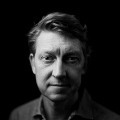M8 with 2.0 firmware high ISO better noise performance?
-
Recently Browsing 0 members
- No registered users viewing this page.
-
Similar Content
-
- 100 replies
- 11,164 views
-
- 9 replies
- 3,506 views
-
- 22 replies
- 2,623 views
-
- 6 replies
- 681 views
-
- 6 replies
- 522 views
-



Recommended Posts
Join the conversation
You can post now and register later. If you have an account, sign in now to post with your account.
Note: Your post will require moderator approval before it will be visible.